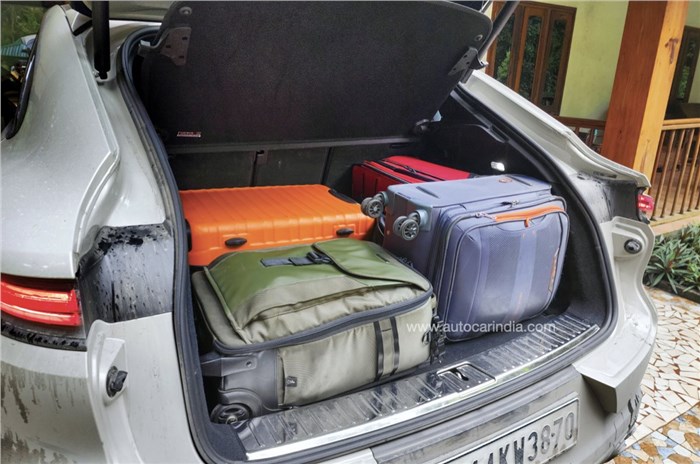Up high above the clouds in Arunachal Pradesh, the Border Road Organisation’s landmark twin tunnels will give all-weather access to the ancient town of Tawang and beyond.
Remote, distant and nestled far in the east, Tawang in Arunachal Pradesh is not your everyday hill station. No sir, no way. Home to a monastery built in the year 1680 at a height of 10,000 feet in the high Himalayas, this hidden gem is all but inaccessible and snowbound in winter; until, now.
The reason? The new Sela tunnels, the world’s longest twin-lane tunnel above 13,000 feet. Built by the Border Roads Organisation at a height below the snowline, the Sela tunnels, when finished, will give all-weather access to Tawang and the upcoming Arunachal Frontier Highway.
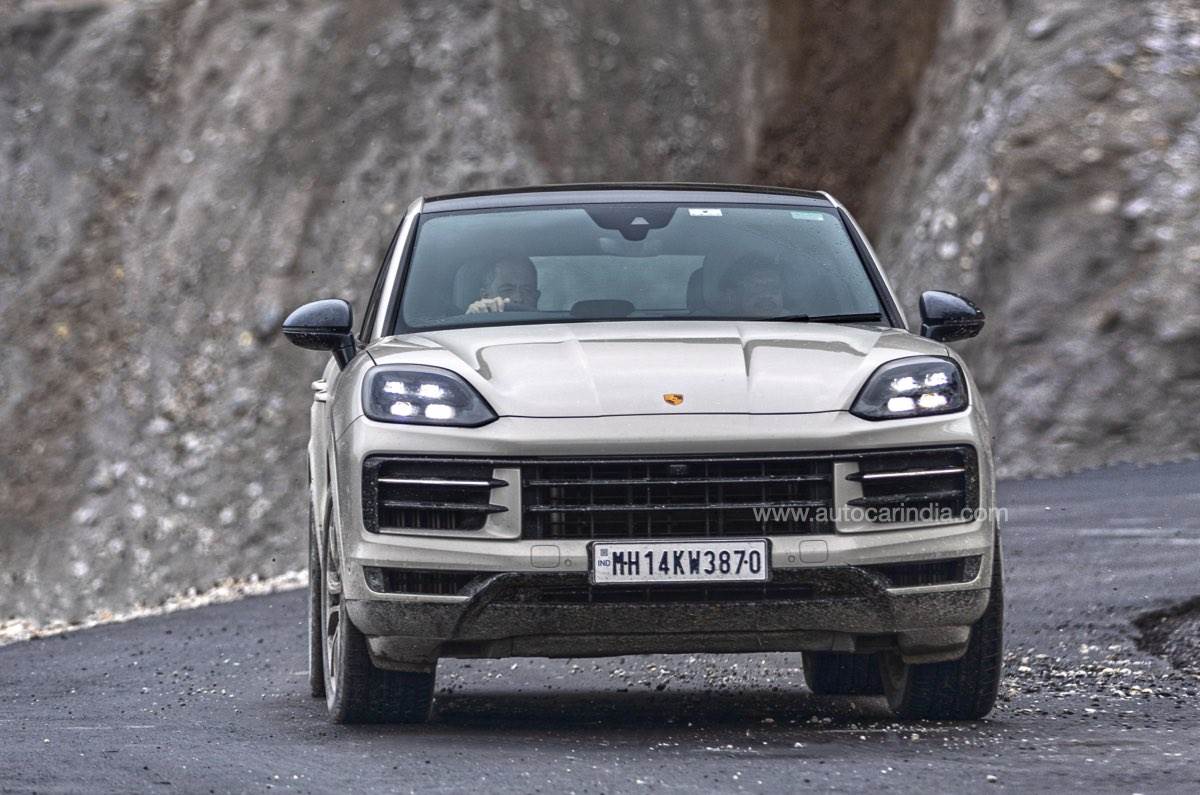
Cut through the mountain – so you don’t need to drive further up to the snowbound Sela pass – the tunnels are cumulatively two and a half kilometres long. And apart from dramatically improving access, they are also likely to reduce travel time by approximately 45 minutes to an hour, depending on conditions.
The right platform
Now finding the right car for the long drive up wasn’t easy; but since it had to be an SUV to tackle bad sections of road, and importantly, we wanted it to be a seriously fun drive, we chose Porsche’s agile Cayenne Coupe. One of the sportiest-looking SUVs around, with its new, raised ‘frog-eye’ nose and sporty 911-like roofline, the updated Cayenne looks even more a Porsche than earlier. And don’t you just love how lush those fat rear tyres look from the back?

That the Cayenne has come so far from the original, especially in the looks department, is impressive. And even better is just how comprehensively the cabin has been updated. The new panoramic screens make it feel like a ‘glass cockpit,’ and what chimes in perfectly is the good combination of tactile metal buttons on the centre console and screen-based controls. The air suspension and lift function are also likely to play a vital role, and I’m delighted that this version comes with Porsche’s free-revving, twin-turbo V6. But more on the Cayenne later, let’s get going.
 We needed to use Porsche’s lift system to clear many obstacles.
We needed to use Porsche’s lift system to clear many obstacles. Welcome to the simply gorgeous but often difficult to traverse North East. Not only will we have to deal with some of the steepest sections of the Himalayas, but there are also constant off-road excursions, heavy rains, clouds and, at times, kilometre upon kilometre of slush. It’s so remote that even Google Maps often just draws a blank; the road just running out on your screen.
River wide
So where exactly are we driving out from? Our route for the next couple of days takes us from Guwahati, on the banks of the mighty Brahmaputra, all the way up to Arunachal Pradesh’s Tawang in the Himalayas. From Guwahati, we follow the river north to Tezpur, and then start our climb up to the new Nechiphu and Sela tunnels. We won’t be going all the way up to the Sela pass; the Sela tunnels will help us cut straight through the mountain and access Tawang.
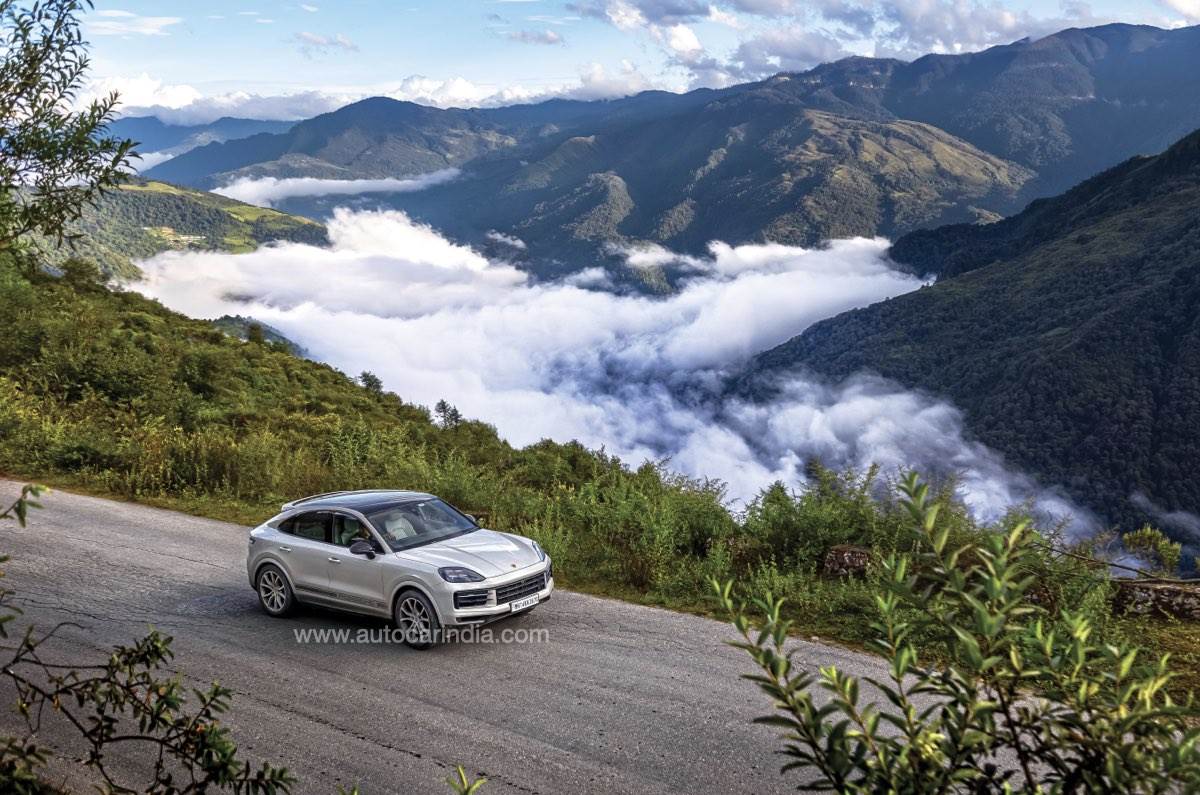 You have to stop to take in the view; what’s nice is that not too many cars pass you.
You have to stop to take in the view; what’s nice is that not too many cars pass you. We collect the car in Guwahati, and after increasing the pressure in the tyres – to help prevent sidewall cuts – I learn there’s no full-sized spare tyre, just a space saver. Wowie. We’ll be going into an environment where people often travel with two full-size spares, and there’ll be plenty of driving up barely levelled rock-strewn sections full of sharp aggregates. Still, after loading it up and getting all the fluids topped up, we head out.
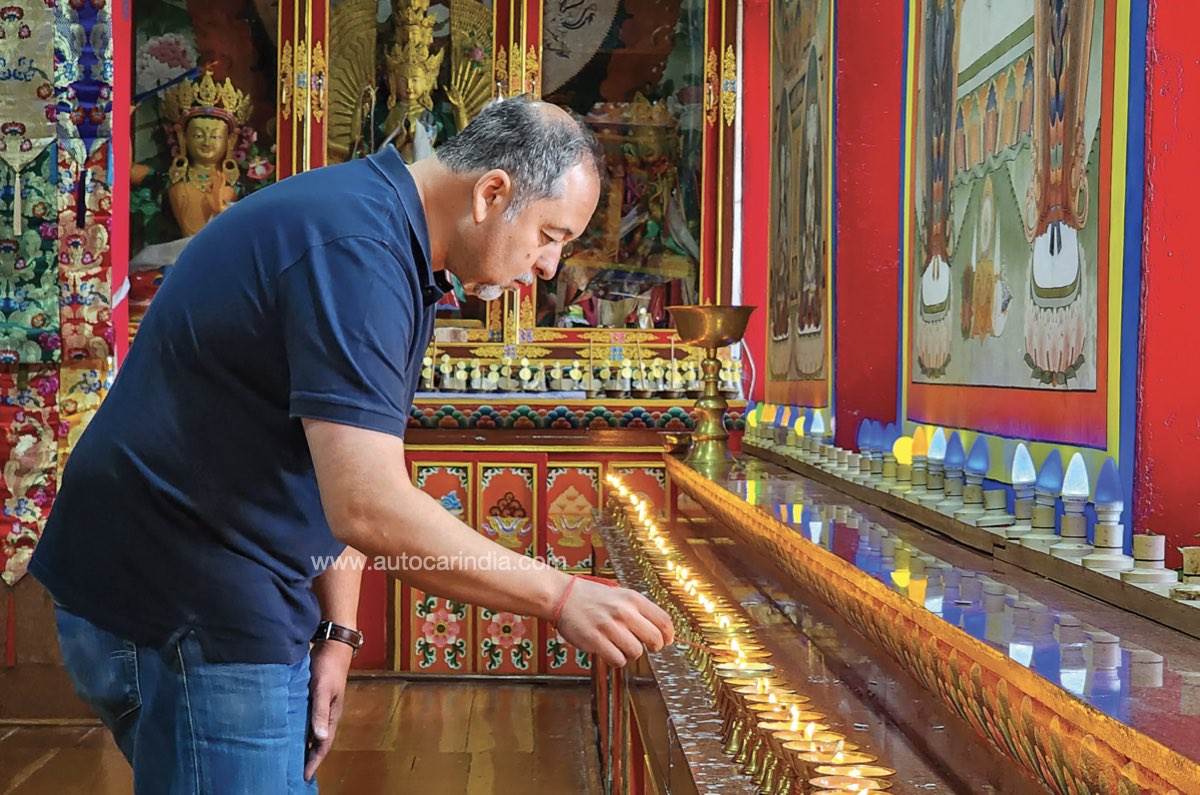
Entering the monastery will take you 300 years back in time.
Guwahati today feels like any other large Indian city. The same sort of roadworks, the same shoulder-to-shoulder traffic, the same drag race from the lights, and the residents even have the same press-on driving style. The drive to Tezpur is a mix of some really good driving roads and some not-so-good sections. The new twin-lane highway is superbly paved, well-lined and the road even has a wide shoulder. Problem is, we keep getting traffic coming at us the wrong way; a lot of it. And that just keeps me on tenterhooks. It’s so common that, at times, I get passed both on the right and the left – the fast lane on the right and the service lane on the left – by traffic going the wrong way. No one cares.
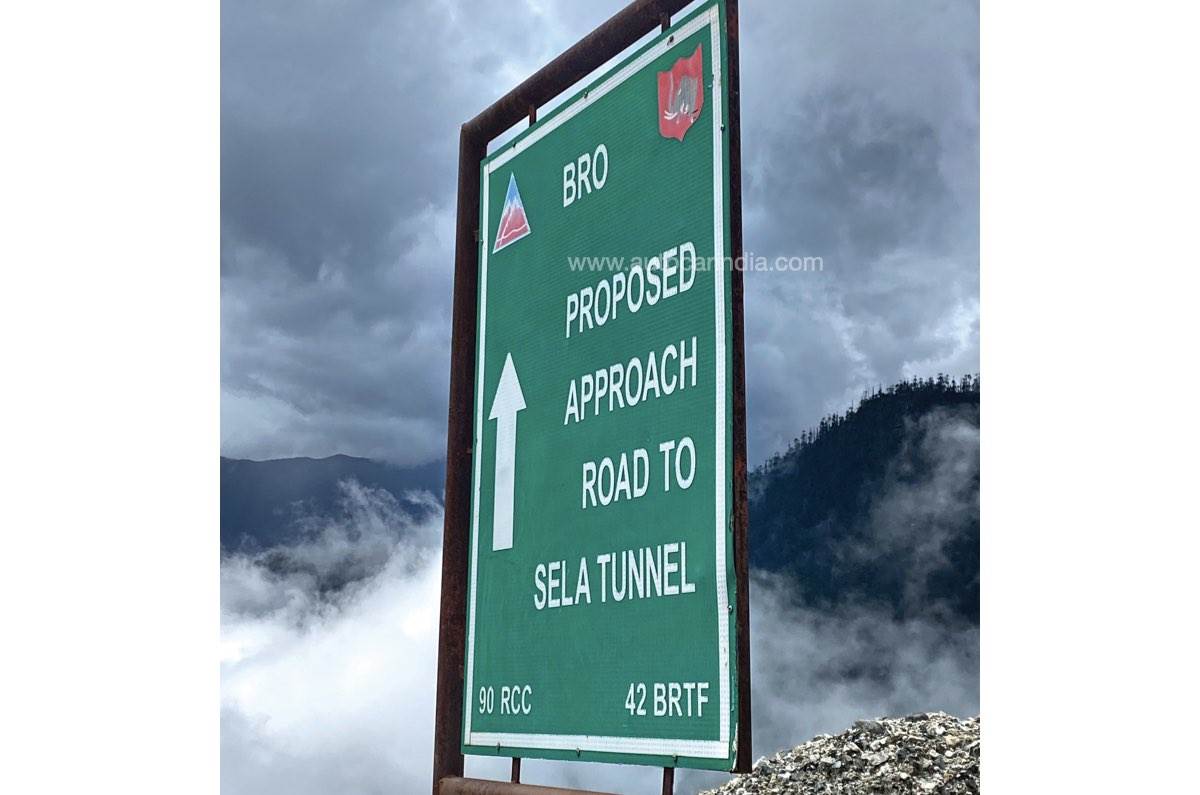
Once open, the Sela Tunnel will give locals access to Tawang in winter.
NH27, however, stays true to form and our drive into Tezpur is almost seamless and smooth; the lush green fields and stunning rural vistas of Assam filling us with wonder. Then comes the shock and awe. Just before coming to Tezpur, we hook a left, and run right across what seems like an inland sea. We can’t see across from where we are on the bridge, and for a bit, the confusion is real. But, of course, it isn’t. It’s the simply massive Brahmaputra. Around three and a half kilometres wide at this point, the scale of this trans-Himalayan that hooks around Tibet from the rear of the high Himalayas is just grand, and as we drive across the Kolia Bhomora Setu bridge, we gape, in awe.
.jpeg&c=0)
In future, NH-13 will connect with the Arunachal Frontier Highway, NH-913.
An early start the next day from our hotel in a botanical garden also has us stop to admire the beauty of a local tea estate. And there’s more green up ahead, much more. Our route next skirts alongside the Nameri National Park and Tiger Reserve close to the Arunachal border. The flora and fauna are quite different from what we drove through earlier. The teak trees are taller, the density of the undergrowth gets thicker and, if we use our imagination, we can get a sense of what the primordial forest must have looked like back in pre-history.
Mountain High
A couple of hours later, as we cross into Arunachal Pradesh, the climb really begins. This is similar to Himachal, where the ghat sections arrive soon after you cross the border. Only here, we get our inner line permits right at the border checkpost, which, of course, takes the better part of an hour.
The roads are wide, well -marked and built to very high standards.
As we settle into the climb, the Porsche is proving to be a great companion. Comfortable, capable of taking bad roads in its stride, and loads and loads of fun on sections where you can really give it some stick – it is proving to be everything I hoped for. This is especially true of the zingy 353hp engine that has plenty of torque in the midrange and loves to rev. It’s no V8, sure, but the ‘fat’ midrange allows for some effortless bursts of acceleration, and what’s especially nice is that holding the accelerator down also sees Porsche’s superb V6 rev like a naturally aspirated engine. What a contrast this ‘entry’ Cayenne is from the earlier-generation ones. This one has some real performance.

The Tawang Monastery has been around since 1861.
The other surprising bit is that some sporadic bad patches apart, driving roads here are pure nirvana. And the best part is that it seems we’ve come exploring during COVID-19; we only pass other cars occasionally. Wide enough to have me not worry about the width of the Cayenne, beautifully paved and dutifully lined, these well-manicured BRO roads often make me feel like I’m on a European tarmac stage of a rally. Now, the Cayenne is nowhere as nimble and darty as a World Rally Championship car, but for all its bulk and mass, it does appear to draw its mass in and concentrate it around the centre much better when I twirl the dial to Sport. The adjustable dampers make the setup marginally stiffer, there’s less up and down movement and the Porsche even tucks into corners with much more resolve.

Out searching for hairpins? This is the place you will find them.
The simply superb roads and the steep gradient in places mean we are soon up past 5,500 feet, the Porsche climbing like a homesick angel: no struggle, no strain. The clear vistas and the views of the deep valleys, however, soon begin to fade. We are getting into some serious-looking and dark rain clouds, and as we drive higher, visibility drops quickly. Soon we are crawling, the white headlights bouncing off the ‘fog’ and not proving particularly helpful. A board up ahead says welcome to the recently opened Nechiphu tunnel, but the D-shaped tunnel is nowhere in sight. Did we miss it? Then it emerges from the ‘mist’, the recently inaugurated mouth of the tunnel still covered in decorations. Visibility is now down to 5 feet, so we crawl through the tunnel. And the clouds on the far side are even more dense. We proceed at walking speed and follow the centerline religiously. But then it disappears, and we find ourselves momentarily on the right side of the road at a sharp left-hander. Needless to say, it’s nerve-wracking. And we only continue when we are able to ‘latch’ onto the rear of a Bolero pickup, with four huge mustard yellow fog lights.
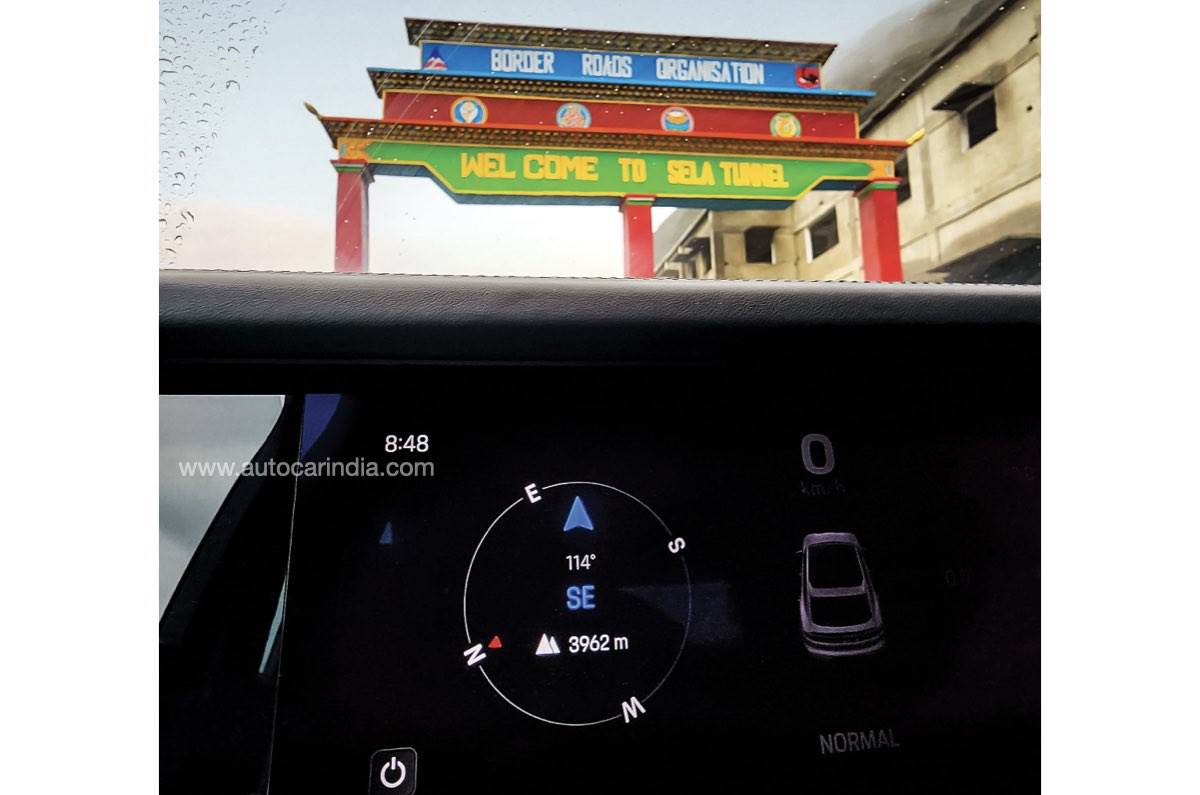
The gates many will drive through, we are the first. Check altimeter on screen.
Once in the clear, we proceed at normal speed as the road leads us over another pass. There are now more bad patches, and I need to raise the suspension to clear some of the rocky sections. Even the well-paved sections are more challenging to drive. The Porsche, however, is in its element here, and I put the paddle shifts to good use in and around the steeper bits. Even the view outside gets an upgrade. Layer upon layer of alpine forests fly past our windows, we roll back the cover of the panoramic glass roof and then, when we stop, we can see snow-lined peaks peeping out among the clouds. But it’s upwards and onwards. We have to get to Tawang before dark, or at least try to. Can’t say I’m paying much attention to fuel efficiency as I regularly use full throttle in small bursts.
Further up, the village of Dirang throws up some more obstacles. The roads really narrow down; we have to drop our pace and then we roll casually into the mother of all Himalayan jams. We are stationary for at least an hour as trucks face off. Nothing to do but take turns grabbing an early lunch. Needless to say, a bypass is desperately needed here.

Monks of all ages were fascinated with the Porsche; we may have a new subscriber.
As we go higher and the altimeter rises past 5,000 feet, what boggles the mind is that the panoramic views down the valleys get even more idyllic. Arunachal Pradesh is really something else, unspoilt for the most part and full of surprises. And far from progressively fading away and breaking up, the BRO-built roads are just as good. Just as wide, just as well-lined and near-perfectly paved.
Tale of two tunnels
As we cross 11,000 feet on the altimeter, the pine trees begin to thin out. Now fewer and far between, our surroundings are craggier, and the vegetation in general is less. Performance is still strong on the Porsche, but there is now a bit more lag and it does take a bit longer to get going. I get so lost in enjoying the car, driving up the multiple hairpins that I almost miss the turn to the tunnels. Now, normally, we would have carried on up this road and over the Sela pass at 13,680 feet. Today, however, we can avoid that route and go through the tunnels with the first portal at 12,800 feet.
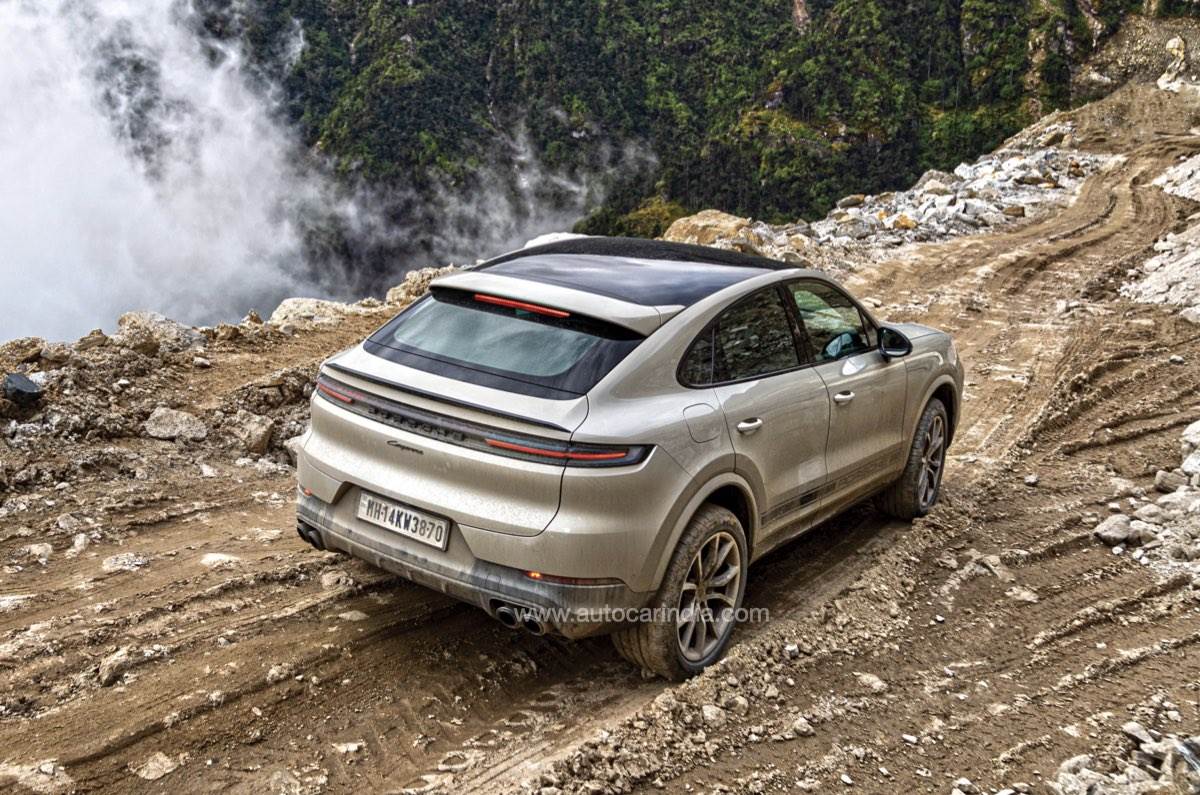
Heavy rains meant the approach road was much more challenging than we anticipated.
Full of slush, deep ruts, wide-open corners and drops without any guardrails put in place yet, we slowly emerge over the frothy, foamy beer-head-like clouds onto a freshly tarmacked section. And then as we climb, faster now, the layer of clouds just drops, way below us. Then we see it: the first portal. Wow, the BRO really has gone straight through the mountain.
Still under construction, the tunnel is only partially complete; 993 metres in length and with all manner of construction equipment scattered around, the drive-through is relatively leisurely. Halfway through, we stop to pick up a passenger; no, he isn’t thumbing a lift. Dinesh Ramteke is the BRO’s on-site executive engineer, and what follows is a fascinating but quick tour.
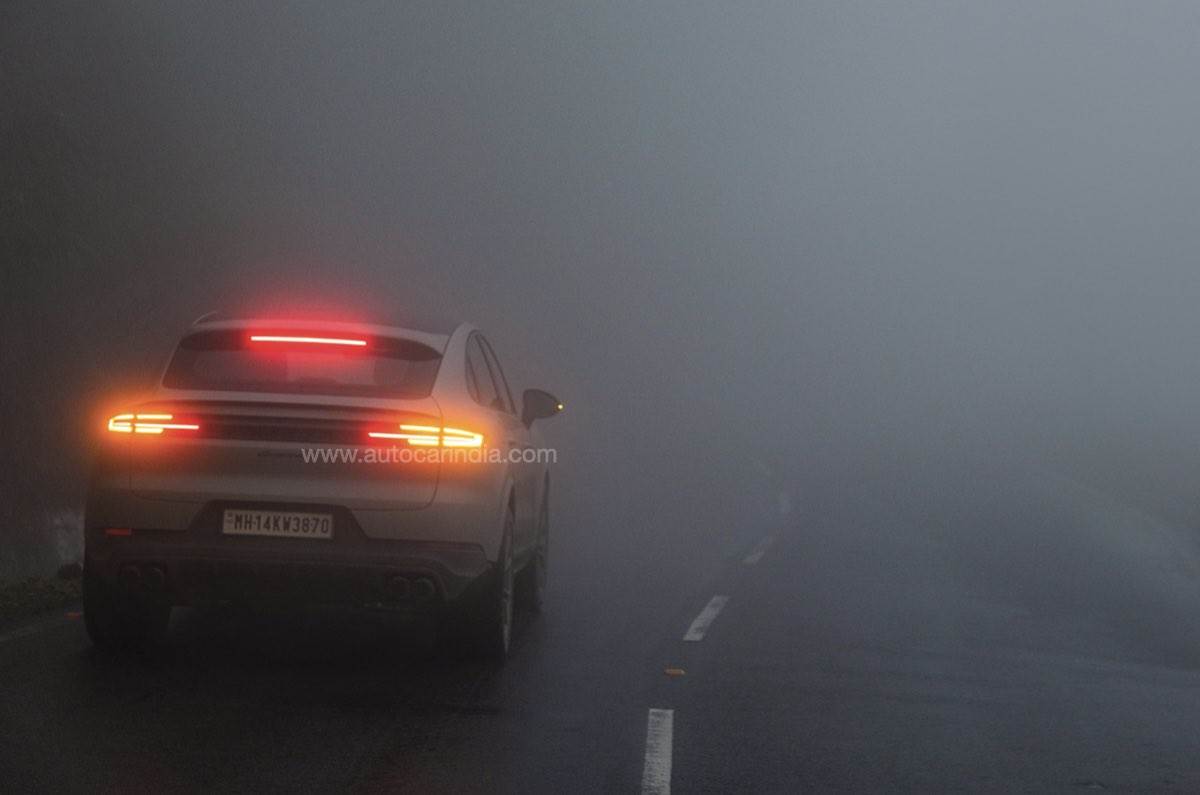
Driving through the fog up the ghat roads can be a real challenge; good reflectors help.
As we begin our run through the second tunnel, we are able to pick up a bit of speed. Much longer at 1,591 metres long, and with very little construction equipment still inside, I give the Porsche its head. The background blurs quickly and we have to use the Cayenne’s lights on full beam. But we also let the windows down and enjoy the sound of the exhaust in Sport Plus reverberating off the tunnel walls. Ramteke seems a bit unsettled, so we slow to a crawl. What’s also significant is that we will be the first to drive through the tunnels and make our way all the way up to Tawang.

Sometimes we wished we had a convertible; at other times, it was seven degrees.
After bidding a quick goodbye to Ramteke, we are on our way again. The sun sets at 5.15pm and reaching Tawang still takes upwards of two hours. The drive down, and up again over the next pass is less challenging and more free-flowing. And yeah, with light fading, and almost no other cars around, the Porsche is in its element. Of course, we make good time. Really good time.
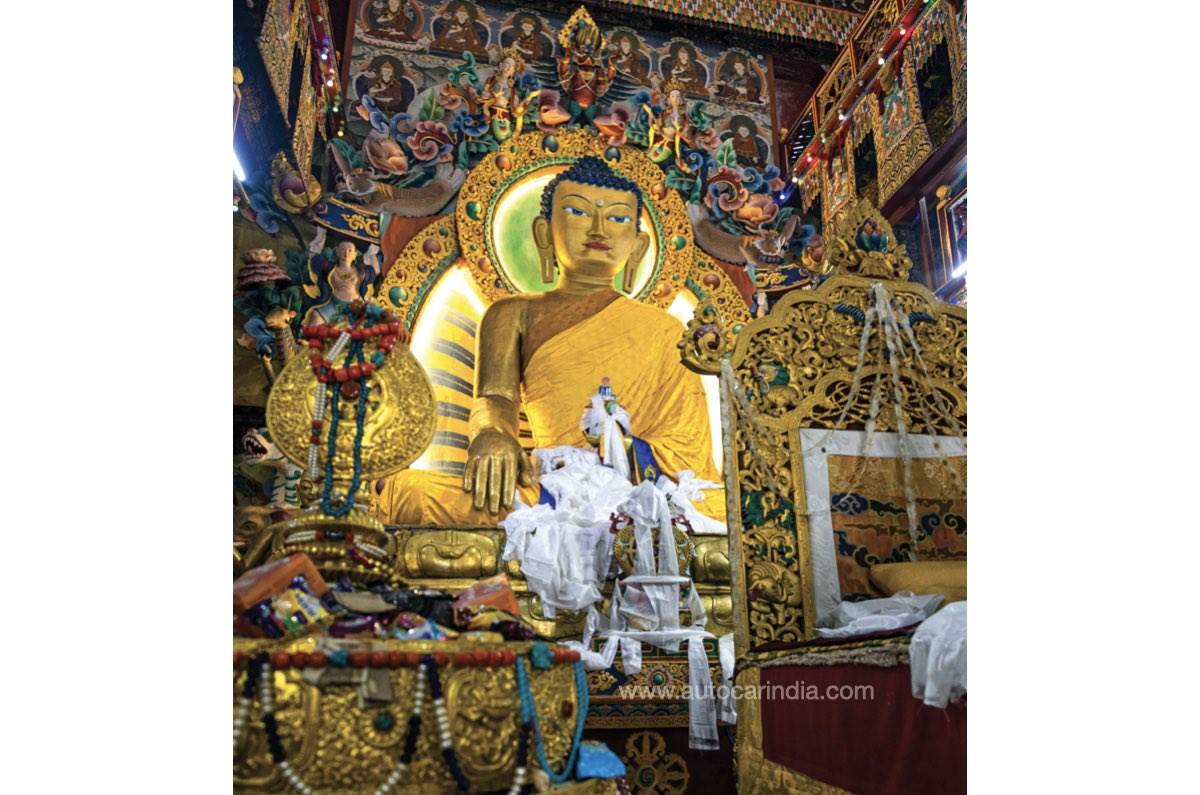
The eight-metre-high Buddha statue has an almost ethereal presence.
And then, finally, we see Arunachal’s hidden gem, Tawang and its famous monastery, catching the last rays of the dying sun. Known as Gaden Namgyal Lhatse monastery (Gaden means paradise), it’s been here since 1681, spreading a message of peace since the time of the Mughals. And as you walk in, you really do feel you’ve gone 300 years back in time.
Engineering tunnels at over 13,000ft
These tunnels took 50 engineers and 700 workers four years to complete from scratch; the difficult Covid years included. The first proposal to make a 12.5km tunnel proved to be nearly impossible. The reason was the heavy drainage in the area; the tunnels sit directly under some lakes near the Sela Pass, up above. And to make matters worse, they had to deal with shifting rock strata. So the BRO finally settled on making two tunnels, the first 993 metres long and the second 1,591 metres long. The second tunnel, because of its length, has a parallel escape tunnel. While the main tunnel is between 12 and 11 metres wide, depending on how you measure it, the escape tube is approximately seven metres wide and built at a distance of 20 metres from the main tunnel.
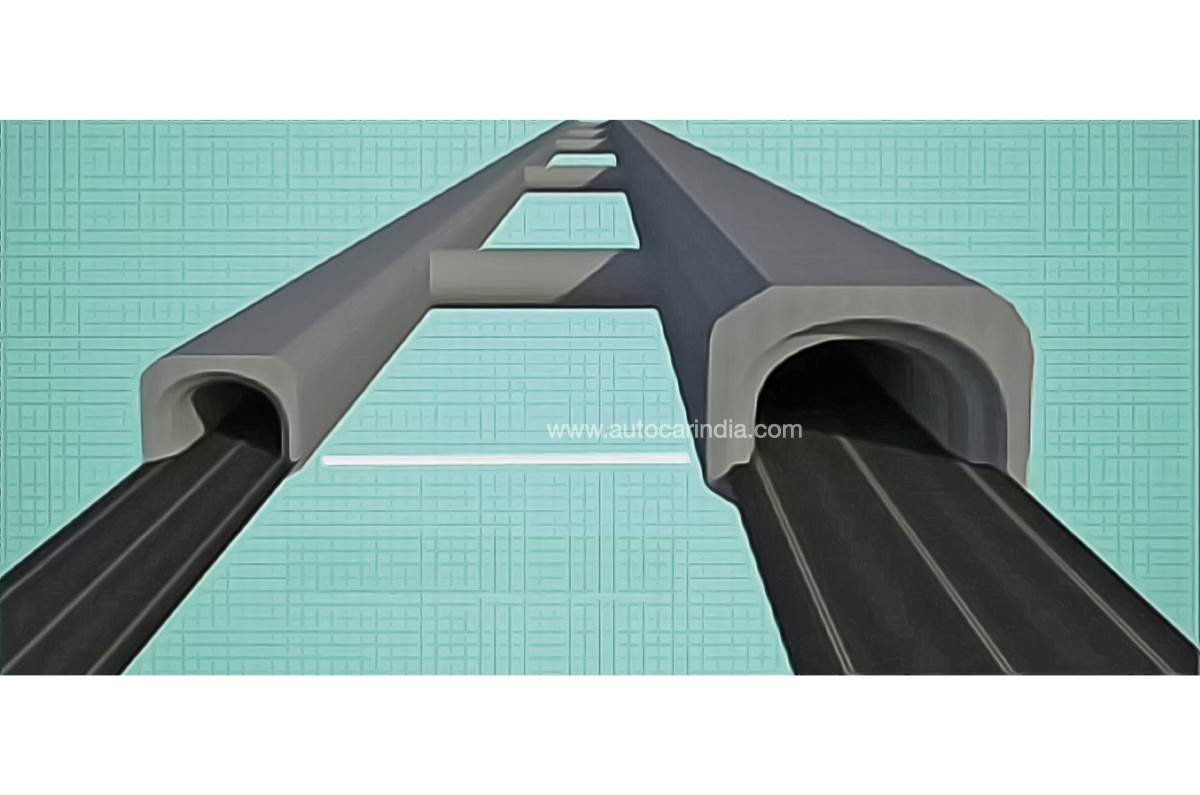
Built using the New Austrian Tunneling Method, which emphasises ‘design as you go’ and selective reinforcement, these tunnels have supports that are built after observing convergence and watching how the rock strata shift. Rock bolting is one method used, where loose rocks are physically bolted in place, and wire mesh supports and concrete support also proved effective.
Q&A with LT.GEN.Rajeev Chaudry, VSM, Director General BRO
Please tell us about the challenges of building these tunnels at heights above 13,000 feet.
The challenges were many. To begin with, we only had a four- to five-month clear window every year to work without heavy monsoon (rain and slush) or winter (heavy snow and sub-zero temperatures that don’t allow concrete to set easily). In addition, the alignment that was initially chosen was not suitable for making the portal, so we had to change it and that lost us vital time again.
Despite these problems, the Sela tunnels were made in good time. How did the BRO manage this?
The nine-kilometre-long Atal tunnel took 10 years to make. But the Sela twin tunnels (three if you count the escape tunnel) took only two and a half years to build the 2.5km total length and this is because we learnt a lot about building Himalayan tunnels at this height after we had executed the Atal Tunnel. Tunnel boring here, in fact, was done at a rapid pace of 120 metres a month from each end, or 240 metres in total a month.






















